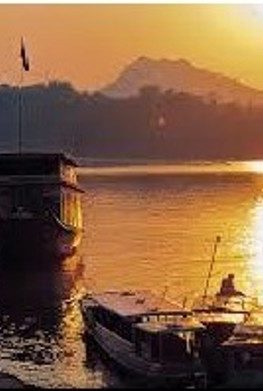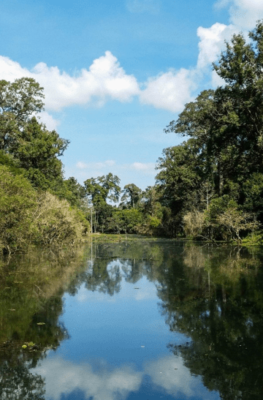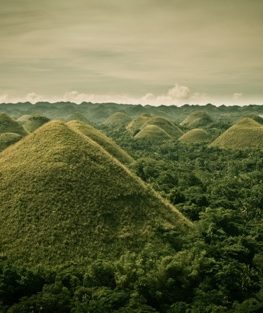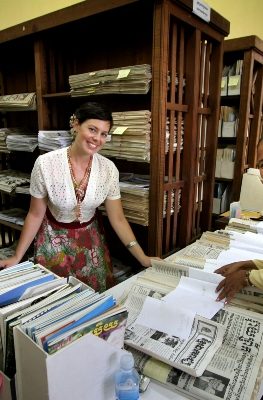Published on January 12, 2010
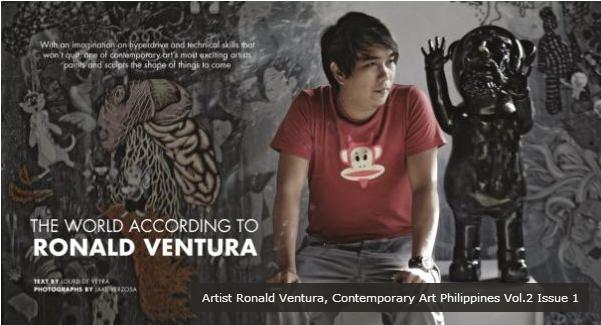
The culturally diverse SE Asian island country that is the Philippines has a complex national identity that has seen significant influence from centuries of colonial rule by Spain, as well as occupations by Japan, and the United States. Introducing Catholicism to the archipelago, the Spanish also entrenched European painting traditions that were initially dominated by post-Renaissance, Christian aligned subject matter. Largely emulating 19th and 20th century modernist artistic movements from Europe, gradually Philippine artists began incorporating more indigenous imagery and subject matters.
Catholicism has remained the dominant religion and to a certain extent still dictates the backbone of much of the art created today, as evident in the allegorical paintings of Jose Legaspi. Another artist who explores aspects of Filippino spiritualism is multi media artist Norberto Roldan of Green Papaya Art Projects in Manila.
After WWII, it would be the Marcos Era of the 1960s-80s that would shape the official direction of creative production, as championed with the construction of the Cultural Centre of the Philippines (CCP). Having celebrated its 40th anniversary in 2009, the CCP is still an important site for contemporary art exhibits.
Comparative to several of its developing Asian neighbours, Philippine or Pinoy art, is today shaped by the affects of neocolonialism and foreign importations, complexities of urbanisation and social inequities, ethnic and national identities, gender roles, and personal psychologies.
Garnering increased international attention, the ascent of Philippine art is thanks in part to those artists living and working abroad. Overseas Pinoy artists generating interest include the pioneering multi-disciplined artist David Medalla whose career stretches some 40-years, the expressive socio-political paintings of Manuel Ocampo, and the poetic minimalist art of Lani Maestro.
On the domestic front, one rising artist to assimilate and layer the varying historic and ethnic identities that constitute the Philippine psyche is Ronald Ventura. Having recently held a solo exhibition in New York, his surreal street-styled pop referential paintings and sculptures pluck from the canons of art as well as the brash iconography of contemporary consumer culture.
Considering the geographic diversity of the Philippines, galleries are dotted throughout the island nation. The majority cluster in within the chaotic energy of Manila, but there are also several galleries in Cebu, Davao in southern Mindanao, and Bacolod on the rugged isle of Negros. In Manila there are numerous small independent spaces that compete to survive, with pockets of art venues occupying the SM Megamall, as well as the bohemian enclaves of the former shoe retail strip of Cubao X, and the Pasong Tamo area of Makati.
Despite funding limitations there are several public and private museums that host contemporary art exhibits, including the National Museum, the Metropolitan Museum of Manila, the privately run Lopez Memorial Museum, and the Ayala Museum. Connected to higher education establishments are the Ateneo Art Gallery, and Vargas Museum.
North of Manila against the backdrop of the Cordillera mountain range, the bustling hill city of Baguio has its own vibrant arts community. Established in the late 1980s by a small group of artists that included National Artist Benedicto Cabarera (known as BenCab), and filmmaker Kidlat Tahimik, the Baguio Arts Guild (BAG) has initiated programmes to help local citizens and promote art within the region. Located on the outskirts of Baguio, BenCab was also instrumental in the developing the Tam-awan Artists’ Village, a colony for local artists that also preserves the culture of the Cordillera people.
Parallel to increased speculation towards other Asian art markets, there has been growing interest in the value of Philippine art with more artists appearing at regional auctions. Driven partly by the preferences of domestic collectors, not surprisingly significant interest is directed toward modern masters and senior protagonists such as the late Vicente Manansala, Arturo Luz, Anita Magsaysay-Ho, and Carlos Botong Francisco.
Younger contemporary artists like the figurative painters Winner Jumalon and Cavite based Eufemio Rasco are also gaining a modicum of regional exposure. One in hindrance to the collecting potential of Philippine art is the rise in forgeries, a similar debacle that Vietnamese artists have been dealing with on the back of the country’s increased creative exposure from the 1990s on.
To learn more about the Philippines’ contemporary art scene, check out: http://contemporaryartphilippines.com.
Bangkok based writer-artist Steven Pettifor is a Bangkok based critic and independent curator. He is the author of Flavours – Thai Contemporary Art



